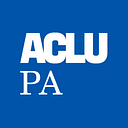The Cash Bail Crisis in Allegheny County
by Danitra Sherman
When we started the Campaign for Smart Justice a few years back, we knew that a cornerstone of the work to reduce incarceration by half and to challenge racism in the criminal legal system would be a vast reduction of the use of cash bail and pretrial detention.
Pretrial detention — the practice of incarcerating a person before they have been convicted of a crime — has devastating consequences and, without exception, disproportionately impacts those with lower incomes and people of color. When someone is locked up pretrial, they can lose their job, their housing, their car, or worse in a matter of days or weeks.
Jails are often deadly, especially for people in pretrial detention. Nationwide, three-quarters of jail deaths occur among people in pretrial detention, and more than one-third of deaths occur within seven days of incarceration. Nationally, 82 percent of all jail suicides occur among people in “unconvicted” status. The numbers are harrowing, but the countless individual stories, like that of Kalief Browder, truly drive home the barbarity of this broken system.
But the reality is, this broken system only exists for those who cannot buy their way out of it. For wealthier individuals who can afford to pay cash bail, their experience in the criminal legal system will be vastly different from those who cannot afford cash bail and end up in pretrial detention as a result.
Pennsylvania, the state with the highest incarceration rate in the Northeast, is no exception when it comes to cash bail and pretrial detention driving the mass incarceration crisis across the commonwealth. That’s why we’ve been investigating where the use of cash bail and pretrial detention has been particularly problematic and working to challenge and put an end to those practices, wherever possible.
Our new report, Punishing Poverty: Cash Bail in Allegheny County, is an analysis of how cash bail drives an epidemic of pretrial detention in Allegheny County.
The findings in the report were disturbing. Despite talk of reform from a number of elected officials and other decision-makers, our analysis found that cash bail was still being set in more than a quarter of initial bail assignments. Particularly shocking was the extraordinarily high rate of cash bail being assigned to people charged with only a minor offense.
Other findings reinforced what we already suspected about the racism underpinning the criminal legal system. Indeed, even as the population of Allegheny County is only 13% Black, the defendants were Black in 58% of the dockets in which cash bail was initially assigned. 60% of Allegheny County’s jail population is Black.
Over the past two decades, the population of Allegheny County Jail has risen by 70%, even as crime has dropped precipitously. Why? Well, since 2000, 95% of the growth in the overall jail population was due to the increase in the unconvicted population. This is a grave injustice.
Elected officials in Allegheny County have a choice to make: they can continue to say all the right things about reform while stifling actual action. Or, they can put their proverbial money where their mouth is and engage in meaningful reform efforts. This means magistrates should stop assigning money bail to those who cannot pay. It means that District Attorney Stephen Zappala should urge all police officers and assistant district attorneys to immediately stop requesting money bail. And it means that Allegheny County government officials should strive to prevent people from languishing in jail because they are too poor to buy their freedom. We should not have two justice systems, one for the rich and one for the poor. Not in Allegheny County. Not in Pennsylvania. Not anywhere. We must do better.
Danitra Sherman is the campaigns director at ACLU of Pennsylvania.
